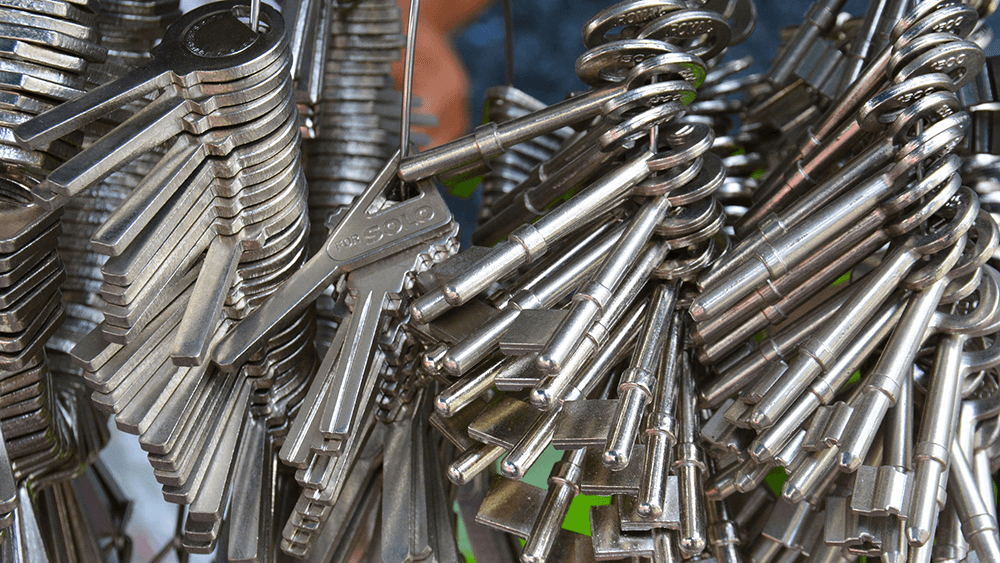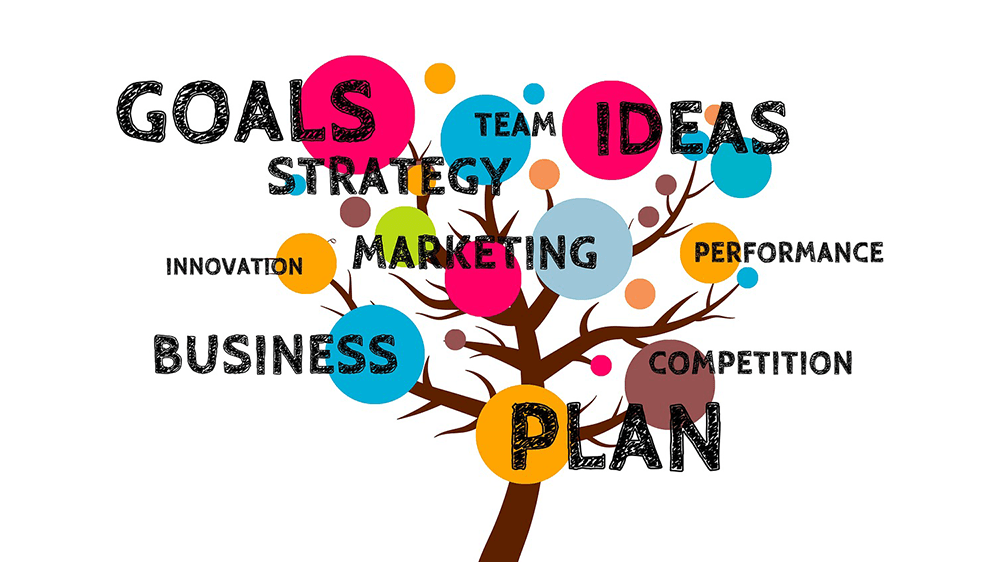
Jan 29, 2019 | News Roundup
A selection of health news from the University of Chicago and around the globe curated just for you.
Gut bacteria protects against food allergies
New research from UChicago’s Cathryn Nagler shows that healthy infants have intestinal bacteria that prevent the development of food allergies. (Discover magazine)
Looking for links between the gut microbiome and eye disease
UChicago researcher Dimitra Skondra is studying possible connections between the gut microbiome and eye disease like age-related macular degeneration. (The Forefront)
What is ulcerative colitis and how can I treat it?
The chronic condition can be debilitating, but treatments are expanding and improving. David Rubin featured. (US News & World Report)
Our pets: The key to the obesity crisis?
Even animals that aren’t eating too much or exercising too little are getting fat. If we can figure out why, we may have the key to our own obesity crisis – and how to stop it. (BBC Future)
Antibacterial stuff is giving dust drug resistance
An antimicrobial chemical called triclosan is abundant in dust—and linked to changes in its genetic makeup, according to a new study. The result is dust with organisms that could cause an antibiotic-resistant infection. (Futurity)

Jan 25, 2019 | Microbiome
by Kate Dohner
“When you go to the forest, what do you see?” asks A. Murat Eren, whom everyone calls Meren.
While the trees are the most noticeable, it’s important to pay attention to what’s on the forest floor—shrubs, wildflowers, ferns, and mosses. Without them, Meren points out, there would be no forest at all.
Like the forest, the human gut contains a multitude of organisms—bacteria, fungi, and viruses—collectively known as the human microbiome.
‘If you can observe a forest after a fire, you can see how it renews,” Meren said. “It all starts on the forest floor, led by ‘pioneer’ species like grasses and shrubs.”
Similarly, Meren is studying the human microbiome after a period of disturbance to see which bacteria help return it to a healthy state.
For instance, when the balance of bacteria in the gut is disrupted, a bacterium called Clostridium difficile or C. diff can proliferate. While C. diff sometimes responds well to antibiotics, recurrent, resilient infections are not uncommon. In these instances, patients can benefit from fecal microbiota transplantation or FMT, the transfer of “good bacteria” from a donor’s stool to a recipient. Although FMT is successful in many cases, there are risks, including the unintentional transfer of problematic biological material, such as viruses.
“With FMT today, we essentially gather the entire contents of a healthy forest and dump that ecosystem into a disturbed forest,” Meren explained. “Though that may work, we don’t know how.”
Meren and his team are on the hunt for the specific bacteria that can set up a healthy environment in any distressed digestive system, especially for those battling inflammatory bowel diseases.
“The microbes we’re looking for are like the person who can talk to anyone at a party,” Meren said. “She’s happy anywhere and helps put others at ease.”
Collaborating with world-renowned clinical experts (including Thomas Louie and David Rubin), Meren and his team are studying fecal samples from people around the world to identify these versatile microbes. Using the advanced computational tools they develop, Meren’s team can compare and categorize bacteria found in a variety of people—from infants to adults, to those in industrialized countries versus places like Tanzania.
The goal is to not only advance our understanding of the trillions of bacteria that make up the human microbiome, but to track down the special characters that can make any microbial community thrive.
“We scientists often gravitate toward what is most abundant in an environment—a byproduct of our historical relationship with numbers and the methods we have to make sense of them,” Meren said. “As a trained computer scientist, I recognize that bias and always remind myself that function—how something contributes to its environment—is what we’re really after.”
Meren cites the role of police in society; though they make up a small proportion of the population, they are critically important to how communities function. So it may be with certain bacteria.
“Instead of investigating just any bacteria we find in healthy human guts, we are conducting a systematic study to find microbes that can help microbial ecosystems recover from distress,” Meren said.
The team has already identified some “microbial peacekeepers” and are continuing their search for more, building a comprehensive genomic and culture library to see how each microbe behaves in different experimental settings.
Ultimately, Meren hopes this work will lead to a targeted, reliable microbial therapeutic that will not only help those with C. diff infections, but also people with inflammatory bowel disease and other gastrointestinal problems.
“Although basic science is demanding and even frustrating at times, important insights will only emerge from this type of work. My group and I believe we are on the right track to finding the critical members that keep the microbial forest in our guts healthy.”
“There’s so much more to learn,” added Meren, “but here at the University of Chicago, we have the right tools to recognize and investigate fundamental questions and are surrounded by tremendous expertise in immunology, microbiology, and gastroenterology—collectively offering us a rare opportunity to transform medicine.”
Kate Dohner is a senior writer for the University of Chicago Medicine & Biological Sciences Development office.

Jan 9, 2019 | Sleep
by Elise Wachspress
Suppose you put a graduate student, a chemist, a molecular geneticist, a mathematician, a Microsoft AI expert, a computational biologist, and a high school student into one intellectual space. What do you get?
At least one thing: proof that our social structures define our sleep schedules. “Duh,” you say.
But after years of research on circadian rhythms and the effects of sunlight and the seasons, it’s important for us to candidly embrace the fact that our social schedules—something over which we humans, individually and collectively, have much greater control than the solar system—carry considerable, perhaps even greater weight in defining our sleep schedules.
And that may explain why this generation of humans also carries the most weight—shockingly more than we did even a few decades ago.
The motley crew described above decided to mine Twitter to document when people were clearly up and awake enough to type into their phones. The team reached back to earlier, happier days of Twitter—in 2012 and 2013—when people used to tweet about their daily lives rather than engage in full-scale political warfare. During that era, Twitter’s default settings included geolocation data, so it was also possible to identify the home time zone of each tweeter.
What the team was expecting was that the timing of tweets would vary significantly based on sunlight or the seasons.
Not true. Instead, the research demonstrated that social schedules—school, work, leisure—were far more powerful. People tweeted while they were, say, getting their kids ready for school or settling in with their spouses to watch the evening news. These daily schedules set up a kind of “social jet lag” that caused people to wake up long before their bodies were ready to face a new day.
Research has shown that lack of sufficient sleep is linked to health problems from diabetes to cardiovascular disease, not to mention accidents (or “performance failures,” as the Association of Professional Sleep Societies calls them).
Of immediate interest to just about everyone, however, is the effect that sleep deprivation has on weight. The team found that the US locales with the highest levels of “social jet lag” also had among the highest obesity rates. Now that we know one factor that is helping to make us fat, shouldn’t we just try to get more sleep?
Mike Rust, the molecular geneticist and a lead author of “Geographically Resolved Rhythms in Twitter Use Reveal Social Pressures on Daily Activity Patterns,” says that is easier said than done—and clearly getting tougher, with a general trend toward people getting less and less sleep over the last several decades. Rust notes that the folks on the West Coast do better both on measures of sleep and obesity, so maybe the lifestyles out there have something to teach us. “One likely factor is spending time outside,” says Rust, suggesting people would benefit from exposure to bright sunlight, especially early in the morning.
Rust came to this project with long experience in studying the circadian rhythms of bacteria. This new approach was one way to examine circadian rhythms in people, using huge datasets that already existed, without the cost of massive surveys, where people tend to shade responses or record their behavior inaccurately. He was “impressed that so much could be learned from this purely public data set not at all intended to tell you about sleep.”
He was also pretty impressed with the contributions of the high school student. When the team realized that they had neglected to account for one potential confounder—shift work—a young scientist at UChicago Lab School jumped in to help; her professionalism helped them find and integrate that data, streamlining the paper’s avenue to publication.
Rust sees the potential in extending this research in human circadian rhythm by using fitness trackers or similar biorecording devices. “If you can follow one person over time and see how the rhythms of their behavior are changing, you might be able to give that person quite useful information about their biological clock.” And for many of us, the basic data collection is already being done, saved on a Fitbit or a cell phone app.
The “take-home” message, however, is one we should all be taking home. If you want to improve your health in the least expensive possibly most enjoyable way, get more sleep. The rock-and-roller’s lament that “I’ll sleep when I’m dead,” may be faster-acting than you planned.
Elise Wachspress is a senior communications strategist for the University of Chicago Medicine & Biological Sciences Development office

Jan 2, 2019 | News Roundup
A selection of health news from the University of Chicago and around the globe curated just for you.
UChicago researchers broaden impact by bringing scientific discoveries to market
Taking biomedical discoveries from bench to startup to bedside. Cover story for the Fall 2018 issue of Medicine on the Midway alumni magazine. (The Forefront)
Neuroscientist receives $2.32 million grant to study the role of the microbiome in Alzheimer’s disease
UChicago’s Sangram Sisodia has received a grant for $2,322,876 over three years from philanthropic foundation Good Ventures to support research on Alzheimer’s disease. (The Forefront)
To battle cancer, first understand the immune system
For years, cancer treatment has largely involved one of three options—surgery, radiation, or chemotherapy. In recent years, immunotherapy has entered the playing field. Tom Gajewski featured. (Science Friday)
Immigrating to the US? Get ready for a new microbiome
Moving to the U.S. can seriously mess with immigrants’ microbiomes, according to a new study that tracked the digestive health of refugees coming to Minnesota from Southeast Asia. (NPR)
How to make software algorithms for health care fair and equal for everyone
Machine-learning algorithms help organizations analyze large amounts of data to improve decision-making. But, what happens when the data being analyzed reflects historical bias against vulnerable populations? UChicago’s Marshall Chin is working to ensure equity across all areas of the healthcare system, including data analysis. (The Forefront)

Nov 30, 2018 | Food Allergies, Microbiome, News Roundup
A selection of health news from the University of Chicago and around the globe curated just for you.
Researchers find promise in new treatment for food allergies
UChicago is part of clinical trial that doctors hope will lead to an FDA-approved medication for people with peanut allergy. Christina Ciaccio featured. (UChicago News)
Save the germs
With modern medicine killing off whole categories of bacteria and viruses—including benign ones that promote health—Jack Gilbert and colleagues propose a way to preserve microbes that may rescue us one day. (The New York Times)
How might the appendix play a key role in Parkinson’s disease?
Those who have their appendixes removed in young adulthood run a nearly 20 percent lower risk of developing the neurodegenerative disorder decades later or not at all, study finds. (Scientific American)
Polsky Center’s Innovation Fund renamed to honor George P. Shultz
The decision to rename the Innovation Fund was the result of a $10 million gift to the Fund from University trustee and Booth alumna Mary A. Tolan, MBA ’92. (Polsky Center)
Jeffrey Hubbell named to National Academy of Medicine
Research by Hubbell—who co-founded UChicago food allergy startup ClostraBio—has led to tools and treatments, including nanoparticle vaccines and drug delivery systems, that combat diseases ranging from influenza and type 1 diabetes to tuberculosis and cancer. (UChicago News)

Nov 21, 2018 | Immunology, Microbiome, Research
by Elise Wachspress
If you think the invention of the microscope was a pivotal moment in the development of biological knowledge, you might be pretty impressed with the flow cytometer.
This technology allows scientists to “see” an entire stream of individual cells, detecting the features of each as they rush single file through a tiny tube. A laser (or sometimes several) shines through or bounces off the cells as they pass by. Depending on the specific kinds of fluorescent indicators applied, flow cytometry can efficiently characterize 30 or more factors in hundreds of thousands of individual cells and even sort them as they surge through the tube.
For scientists studying the microbiome, the immune system, and their intersection, flow cytometry—we celebrate its 50th anniversary this year—was a breakthrough. The tool provides an efficient way to both distinguish the various bacteria in a sample and identify human immune cells and the particular antibodies they carry.
Last fall, a team led by Jeffrey Bunker (a student in the University of Chicago’s revered Medical Scientist Training Program) and his mentor, Albert Bendelac, MD, PhD (A.N. Pritzker Professor of Pathology) used flow cytometry to understand an important interaction between the gut and the bacteria that live there.
The gut is the source of large quantities of immunoglobulin A (IgA), the most abundant antibody protein in mammals. In our intestines, where we depend on a diverse community of bacteria to digest our food and make important by-products like vitamins, IgA sticks to the surfaces of the microbes, allowing them do their work while keeping them from settling in on the mucous membranes that line the gut. These membranes are the critical barrier that separates the energy furnace in our intestines from the rest of our bodies.
But how do IgA proteins—which defang bacteria with a kind of key-in-lock technique—recognize the many different kinds of bacterial locks and latch so specifically on to each? Thanks to flow cytometry, the team could identify the many types of bacteria involved, so they knew the complicated job IgA was up against.
What they found was that IgA cells in the gut were “polyreactive”: they could clasp very specifically onto many different types of bacteria. This Swiss-army-knife ability was not the result of intervention by other parts of the immune system or hyperactive mutations within the IgA cells themselves. Even changes in diet (and the presumed alterations in the balance of bacteria induced by these changes) did not significantly affect their ability as quick-change artists.
This research demonstrated that IgAs, part of our adaptive immune system, actually have the innate—born in—ability to recognize individual types of bacteria, even new ones, and do what they need to do to create the right latch. The takeaway is that the bacteria in our guts and our own immune systems have clearly been evolving together, probably for millennia, and that the immune systems of new humans have innate ability to recognize “old” bacteria—those that have been fellow travelers with the human race for generations.
This is just one more bit of evidence that none of us are truly individuals. Each human being is a colony of species living together in community—communities with very long histories and intense cultures—and we’re wise to go with the flow.
This past summer, Bunker and Bendelac went on to publish a major review article on IgA biology for the journal Immunity. There they presented a new framework integrating two distinct types of immunity that protect the gastrointestinal mucus membranes: the polyreactive IgA described above and much more “bespoke” key-and-lock responses to pathogens and vaccines provided by other kinds of immune cells.
Elise Wachspress is a senior communications strategist for the University of Chicago Medicine & Biological Sciences Development office

Nov 9, 2018 | Medicine, Research
by Kate Dohner
One in three Americans uses herbal therapies. Yet less than one in 3,000 scientific studies focus on this increasingly popular therapy.
Researchers at the Tang Center for Herbal Medicine Research at the University of Chicago are changing that. Established in 2000 through generous donations from the foundations of Cyrus Tang, the Tang Center seeks to uncover the benefits and potential dangers of herbal therapies.
“The majority of prescription medications are derived from natural products,” explained Chun-Su Yuan, MD, PhD, Cyrus Tang Professor and director of the Tang Center. “At the Tang Center, we apply a scientific approach to identify new herbal therapies and gain a better understanding of how they might help patients.”
Yuan and his colleagues were among the first to point out that—because most herbal medicines are taken by mouth (as capsules or teas)—they must be digested and absorbed by the microbiome, the trillions of bacteria that live in each person’s gut.
One of the most popular herbal medicines worldwide, ginseng has been used for centuries to treat a variety of ailments. In recent years, it was discovered that after ginseng is consumed, its original compounds are transformed by certain gut bacteria into new substances called metabolites—one of which, “compound K,” has significant cancer prevention potential.
Yuan and his team are studying ginseng’s ability to fight colorectal cancer, one of the most common cancers worldwide. This work, previously supported by a $6 million grant from the National Institutes of Health, led to an important discovery: When ginseng was fed to mice with colorectal cancer, it not only significantly reduced inflammation in the colon but also restored the bacterial community to a healthy state.
In a related study, Yuan’s team examined how American ginseng (one of the main species of ginseng) affects the microbiomes of people who eat different diets. They studied six volunteers in the Chicago area—half of whom regularly ate an Asian diet of largely vegetables and rice, and half who ate a high-fat, Western diet. Each of the participants took ginseng capsules by mouth for seven days.
The researchers found that those on the Western diet had much higher levels of cancer-fighting compounds compared to those on the Asian diet. This preliminary study suggests ginseng may be even more beneficial for those who eat a Western diet.
“This was not what we expected,” offered Yuan. “However, the high-fat diet appears to affect the composition of gut bacteria, and in turn, allows for better absorption of ginseng’s anti-cancer compounds.”
Looking ahead, Yuan seeks to study ginseng’s influence on the microbiome in greater depth, eventually moving into clinical trials. But more animal studies are needed first.
“The general public is very enthusiastic about dietary supplements and herbal medicine,” said Yuan. “With continued research, we hope to provide unbiased scientific findings to help inform the medical community, patients, and health-conscious consumers.”
Kate Dohner is a senior writer for the University of Chicago Medicine & Biological Sciences Development office.

Nov 8, 2018 | Lung Disease, Research
by Elise Wachspress
Stop for a minute and breathe, just breathe. Now envision what your lungs are doing.
In your mind’s eye, do you see big pink balloons filling and deflating?
Close. What’s really going on is hundreds of millions of tiny little pink balloons filling and deflating—ten to twenty times a minute, even more often for babies and small children. Your lungs actually look more like foamy, pulsating soap bubbles than balloons.
In between these bubbles—the alveoli—is a flexible web that allows the little sacs to expand and contract, taking in air, grabbing the oxygen, and dispelling the carbon dioxide waste products.
Unless the web starts to harden. That’s what happens in the case of interstitial lung diseases (ILD). Alveolar expansion gets more and more difficult, until patients begin to feel their lungs are made of concrete. The damage is usually progressive and irreversible. In some cases, certain medications can slow ILD, and some people may be candidates for lung transplants. Otherwise, it’s not hard to see where this condition leads. When you can’t breathe, you can’t live.
ILD can be caused by exposure to hazardous materials like asbestos. Sometimes autoimmune diseases, like rheumatoid arthritis, can trigger the disease. Unfortunately, in most cases, especially for a subset of the disease called idiopathic pulmonary fibrosis (IPF), the cause is unknown.
Physician-scientists at the University of Chicago are working to change that—because if you know the causes of disease, you are many steps closer to resolving it. This quest is particularly critical right now, because over the last three decades, mortality from ILD has doubled in the US.
UChicago, one of the few centers of excellence for treating the disease, draws many of the top people interested in studying it. A large team that included clinician-scientists, researchers, and radiologists from UChicago and NorthShore University HealthSystem, recently found some powerful indicators in predicting ILD outcomes—findings which will not only help physicians fine-tune treatments, but also provide clues of the disease’s mechanism.
One indicator involved the lymph nodes, the organs that 2018 Nobel Prize winner Jim Allison describe as like Rick’s Place in Casablanca: where all cells—the good guys, bad guys, reporters, and soldiers—go to hang out.
The team, led by Deji Adegunsoye, Jonathan Chung, Mary Strek, and Anne Sperling, found that when the lymph nodes tucked between the lungs were enlarged—a condition visible on a CT scan—patients had much worse lung function and significantly increased mortality.
They also found these patients had characteristic imbalances in cells and substances associated with the immune system, some of which could be found through a blood test. In fact, patients with large numbers of one specific interleukin—a protein generated by the immune system—circulating in their blood had the worst survival rates.
Taken together, these factors are likely biomarkers of the patient’s prognosis. Both can be monitored via minimally invasive testing, as opposed to the lung biopsies currently used.
Patients who show neither of these indicators likely have a truly different form of ILD, which not only means longer survival, but may also be differentially treatable with certain immunological drugs.
This latest research is only one strand of the many ways UChicago scientists are fighting ILD. The involvement of these immunological factors seems to corroborate what many team members have suspected through years of clinical work: that a variety of triggers—both chemical and microbial—may set up an immune response that attacks the lungs. IPF patients have often reported exposure to substances like organic solvents, stone dust, and/or mold. The Chicago team is looking for funding for a dedicated occupational health consultant to extensively document patients’ life histories in hopes of identifying disease triggers. As with a similar discovery that asbestos exposure causes the universally deadly mesothelioma, they hope to make ILP preventable.
The team is also working to significantly increase their biobank of lungs, which are exceptionally fragile and require a very specialized storage regimen. The lymph node findings were only possible because of the intense support of UChicago’s technical/biobanking staff (who must often respond on a moment’s notice when a patient undergoes a lung transplant) and strong collaboration with NorthShore. The team hopes UChicago can become a regional center of lung biobanking, to drive this kind of research.
And with the help of molecular engineers, the team is also working to develop microfluidic tools to drive that lung research and develop new drugs to address the immunological effects—tools and drugs that can be commercialized for use across the world, with the help of the Polsky Center for Entrepreneurship and Innovation.
For too long, interstitial pulmonary disease, especially IPF, have been a death sentence. It’s way past time for a change.
Elise Wachspress is a senior communications strategist for the University of Chicago Medicine & Biological Sciences Development office

Oct 31, 2018 | Immunology, Microbiome, News Roundup, Research
A selection of health news from the University of Chicago and around the globe curated just for you.
Three UChicago Scientists Earn NIH Grants to Pursue Innovative Research
Three UChicago scientists—including Jun Huang, who studies the immune system and its role in treating infectious diseases and cancer—each have been awarded $1.5 million grants over five years from the National Institutes of Health in support of their innovative, high-impact biomedical research. (UChicago News)
Noah’s Ark for Microbes
A team of researchers, including Jack Gilbert, is calling for the creation of a global microbiota vault to protect the long-term health of humanity. (Science)
These 19 MassChallenge Startups Just Won $1.65M
Nineteen early-stage startups, including Oxalo Therapeutics, won a total of $1.65 million at Wednesday night’s MassChallenge awards ceremony. (BostInno)
Polsky Opens its High-Profile Accelerator to Alumni Startups
UChicago’s New Venture Challenge, ranked among the top accelerator programs in the country, is launching an alumni track as part of its annual startup competition. (American Inno)
Meet the Carousing, Harmonica-Playing Texan Who Just Won a Nobel for his Cancer Breakthrough
This year, the Nobel Prize was awarded to James Allison, PhD—a colleague, friend, and “The Checkpoints” bandmate of Tom Gajewski—for research that laid the groundwork for the development of checkpoint inhibitor immunotherapies. (WIRED)

Oct 10, 2018 | Commercialization
by Matthew Eckwahl, PhD
Postdoctoral fellow in the Department of Biochemistry & Molecular Biology
Claire Stevenson Stedden
Graduate student in the Committee on Development, Regeneration and Stem Cell Biology
While Silicon Valley may be the first place people think of for startups, Chicago has rapidly turned into a leading hub of entrepreneurial productivity, ranked as one of the best US cities for new companies. One driving force of this flourishing ecosystem: tech accelerators, designed to help startups quickly become self-sufficient. The University of Chicago’s New Venture Challenge is recognized as among the best in the country; famous businesses birthed here include GrubHub and BrainTree (acquired by PayPal in 2013 for $800 million).
UChicago’s Polsky Center recently put their summer accelerator cohort to the test at Demo Day, a showcase for new business pitches. The event provided a chance for each startup to evaluate how ten weeks of intensive work held up in the eyes of expert judges.
Two groups of this cohort aspire to use science to both make the world a better place and turn a profit. SinkGuard Inc. wants to make hospitals safer, while BTRFY seeks to upcycle food waste into sustainable snacks. Startups like these help drive Chicago’s research ecosystem.
Healthier hospitals
SinkGuard, winner of the audience choice award at Demo Day, intends to reduce hospital acquired infections—a huge health care burden estimated to contribute to 99,000 deaths each year—simply by modifying the sink drains in patients’ rooms.
During hand washing, rinsed-off bacteria fall into the sink drain and stay there. Studies have found that the drains act as reservoirs for the bacteria to grow and spread back into the room.
This is especially concerning for certain types of bacteria, including Pseudomonas and Klebsiella, major problems in the intensive care unit. Studies, including one that inspired Ted Engels, SinkGuard’s founder, show that removing sinks (along with “water-safe” policies like disposing waste water outside patient rooms and using special washcloths instead of water) are effective ways to fight dangerous bacteria.
Why not just clean the sink? Cleaning actually fails to fully eliminate contamination, possibly because the bacteria live deeper in the pipes than disinfecting agents can effectively reach.
This is where Engels’s solution comes in. A recent UChicago alumnus, Engels is developing a first-generation “antimicrobial and self-disinfecting sink drain” that “stops the growth of deadly bacteria.” The drain can be retrofitted onto existing hospital sinks, minimizing the burden and cost of implementation—an added bonus for healthcare systems.
A practical new protein source
In contrast to SinkGuard, BTRFY (pronounced “better-fy”) aims to transform food waste into enticing snacks using fungal fermentation. BTRFY’s CEO, Tyler Huggins, who earned his PhD in civil and environmental engineering at the University of Colorado Boulder, is motivated by the urgent need for more ecofriendly protein sources.
Food waste is a massive problem: more than one-third of all food that’s grown becomes garbage—over 1.3 billion tons per year. The enormous amounts of water and other resources used growing, preparing, and bringing these foods to market exert a tremendous environmental impact, and food rotting in landfills gives rise to vast quantities of greenhouse gasses that threaten our planet.
BTRFY, which was also selected for Argonne’s highly competitive Chain Reaction Innovations program, repurposes the nutrient-rich water left over after brewing beer. Instead of sending this water to costly wastewater treatment, BTRFY feeds brewery water to mycelium—also known as mushroom roots—promoting extremely rapid growth. BTRFY harvests and dries their mycelium “crop” to produce a flour-like product that can be baked into high protein snacks. Their first product, MycoCrisps, is described as having a pleasingly cheesy taste with a “hint of umami.”
While BTRFY’s mycelium reputedly has a fondness for double dark stout, it’s happy to grow on a variety of nutrient sources, including unwanted byproducts from wineries and the dairy industry. “I want my kids to look back in amazement at the stuff we used to throw out,” noted Tyler. BTRFY is proud of its low carbon footprint and aims to make a “tasty snack that is not just better for you, but better for the planet.”
With a global population projected to reach nearly 10 billion by 2050, the world faces a rising demand for protein. Mycelia offer a promising solution: unlike many plant-based foods, they are a complete protein source and can be rapidly and sustainably grown. In fact, one fungal species has the distinction of being the world’s largest organism, so mycelium offers great potential for scalability. “Snacks are only the beginning—just a demonstration of what we’re trying,” Tyler said.
By transforming new startups into viable companies, UChicago accelerators are a key part of Chicago’s burgeoning tech scene. Both Tyler and Ted agree the Polsky Center helped their companies forge ahead. The program provided “amazing support” and “helped to keep us on path and accelerate quickly,” Tyler said. “Getting to interact with the other startups was important and motivated me,” Ted attested.
It will be exciting to see what the future holds for these and other upcoming Chicago companies looking to harness technology to make a difference.













